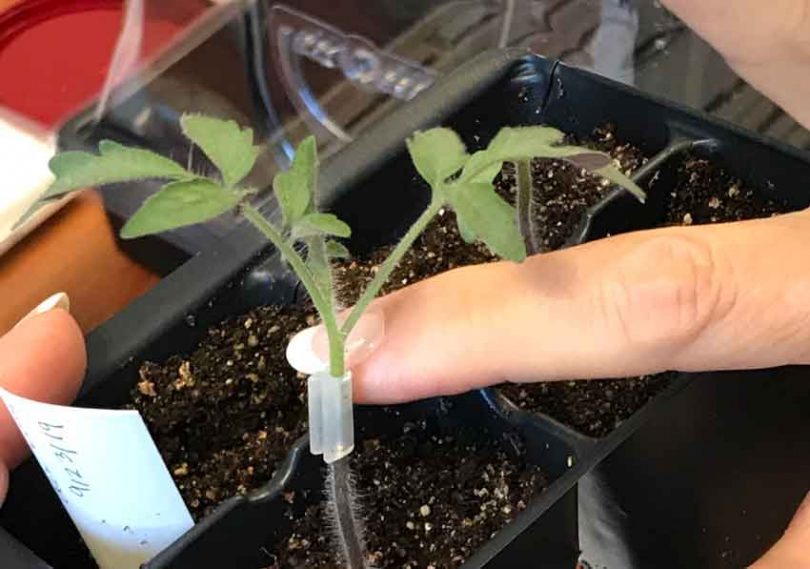Mastering Tomato Grafting in South Africa: Perfect Varieties, Robust Rootstock, and Maximum Success
Tomatoes, with their vibrant colors and delicious flavors, have earned a cherished place in South African gardens. If you’re a gardener in this diverse country, you’re likely eager to maximize your tomato harvest. One technique that promises impressive results is tomato grafting. In this comprehensive guide, we’ll explore the art and science of grafting tomatoes in South Africa, focusing on selecting the ideal tomato varieties for grafting and choosing robust rootstock to armor your plants against disease and stress.
Understanding the Science of Tomato Grafting
The Intricate Art of Grafting
Grafting, a horticultural technique as old as agriculture itself, involves joining the rootstock of one plant with the scion of another. In the case of tomatoes, grafting primarily serves to harness the rootstock’s remarkable disease resistance, adaptability, and nutrient absorption capabilities.
This union creates a synergy where the rootstock provides a robust foundation, and the scion contributes the desired fruit characteristics. The result is healthier, more productive tomato plants that can withstand South Africa’s variable climates.

The Benefits of Grafting Tomatoes
Disease Resistance: Fortify Your Plants
Tomatoes are vulnerable to various diseases, including nematodes, verticillium wilt, and fusarium wilt. Grafting onto disease-resistant rootstock significantly reduces the risk of these ailments, fortifying your plants against South Africa’s diverse soil pathogens.
Enhanced Yield: A Harvest Bonanza
One of the most compelling advantages of grafting is the substantial increase in yield. Grafted tomato plants tend to produce larger and more abundant fruits. This phenomenon is attributed to the rootstock’s enhanced nutrient uptake capabilities, supplying the scion with the essential elements it needs for optimal growth and fruit development.
Extended Growing Season: Defying Climate Constraints
South Africa’s variable climates can pose challenges to tomato growers. Grafted tomato plants, with their increased vigor, allow for earlier planting and an extended harvest period. This means you can enjoy your homegrown tomatoes even longer, regardless of your specific climate zone.
Climate Resilience: Thriving in Adverse Conditions
Grafted tomatoes display superior tolerance to environmental stressors, such as drought and high salinity. For South African gardeners contending with challenging conditions, this resilience ensures that your tomato plants not only survive but thrive.
Selecting the Best Tomato Varieties for Grafting
The Magnificent Eight: South Africa’s Top Tomato Varieties
South Africa boasts a diverse array of tomato cultivars, each with its unique characteristics. When it comes to grafting, choosing the right varieties is essential. Here are eight exceptional tomato varieties that have proven themselves in South African gardens, making them perfect choices for grafting:
1. Big Beef (F1)
- Scion: Big Beef is a large, flavorful beefsteak tomato that thrives when grafted onto disease-resistant rootstock. Its robust flavor and size make it a favorite for sandwiches and salads.
2. Moneymaker
- Scion: Moneymaker is a classic, versatile tomato with a balanced flavor. It’s a reliable choice for grafting and is well-suited for a wide range of culinary applications.
3. Marglobe
- Scion: Marglobe is known for its disease resistance and excellent flavor. It’s a superb choice for grafting onto disease-resistant rootstock for healthy and flavorful tomatoes.
4. Cherry Sweetie (F1)
- Scion: Cherry Sweetie produces sweet and juicy cherry tomatoes, perfect for snacking and salads. Grafting it onto disease-resistant rootstock ensures a bountiful harvest.
5. Sungold Cherry (F1)
- Scion: Sungold Cherry is celebrated for its exceptional sweetness and vibrant orange color. Grafting it onto disease-resistant rootstock guarantees a delightful and prolific crop.
6. Roma
- Scion or Rootstock: Roma is an excellent choice for both scion and rootstock. Its firm flesh and rich flavor make it ideal for canning and making sauces. When used as a scion, it preserves its distinctive traits.
7. Yellow Pear
- Scion: Yellow Pear is a charming heirloom cherry tomato with sweet, yellow fruit. Graft it onto disease-resistant rootstock for healthy plants and unique, flavorful tomatoes.
8. Pearson
- Scion: Pearson is a versatile pear-shaped tomato known for its balanced flavor. It’s a reliable choice for grafting and can be used in various culinary preparations.

Choosing the Perfect Rootstock for Disease Resistance
The Foundation of Success
Selecting the right rootstock is crucial for disease resistance and overall plant health. When choosing rootstock for grafting tomatoes in South Africa, consider these exceptional options:
1. Multifort (F1)
- Disease Resistance: Multifort offers excellent resistance to nematodes and various soil-borne diseases.
2. Beaufort (F1)
- Disease Resistance: Beaufort is prized for its resistance to root-knot nematodes and verticillium wilt, making it an ideal choice for rootstock.
3. Maxifort (F1)
- Disease Resistance: Maxifort is renowned for its resistance to nematodes, fusarium wilt, and verticillium wilt, making it a robust rootstock choice.
4. RST-04-106-T (F1)
- Disease Resistance: RST-04-106-T exhibits excellent resistance to nematodes, providing a sturdy foundation for grafted plants.
Planting Spacing for Grafted Tomato Plants
Allowing Room to Thrive
Proper planting spacing is crucial for the success of grafted tomato plants, allowing them to thrive in South Africa’s diverse climates. It’s essential to provide adequate space for each plant to receive sufficient light, air circulation, and nutrients.
In-Ground Planting
For in-ground planting, follow these spacing guidelines:
- Row Spacing: Maintain approximately 60 to 90 centimeters between rows to facilitate easy access and promote air circulation.
- Plant Spacing: Space grafted tomato plants about 60 centimeters apart within the rows. This spacing ensures that each plant has enough room to grow, spread, and receive adequate sunlight.
Container Planting
If you opt for container gardening or have limited space, choose large containers, such as 20-liter pots, for grafted tomato plants. Ensure that each container has proper drainage and fill it with high-quality potting mix.
Vertical Gardening
In South Africa, where space can be limited, consider vertical gardening techniques for grafted tomatoes. Growing them on trellises or using vertical structures maximizes space, enhances air circulation, and reduces the risk of soil-borne diseases.
The Best Time to Graft Tomatoes in South Africa
Timing for Triumph
The timing of tomato grafting in South Africa significantly influences grafting success and overall productivity. South Africa’s diverse climate zones mean that the ideal timing can vary. However, as a general guideline, consider the following:
Early Spring to Late Spring (September to November)
In most regions of South Africa, early spring to late spring is the optimal time for tomato grafting. During this period, temperatures are rising, and the risk of frost is decreasing. Grafting at this time allows you to transplant your grafted tomato plants into the garden when conditions are favorable for growth.
Temperature Considerations
Temperature is a critical factor in the success of tomato grafting. The ideal temperature range for grafting tomatoes is between 24°C to 29°C. Grafting during these temperatures encourages rapid healing and a strong graft union.
To ensure the right temperature for grafting success, you may need to provide artificial heat or shade, depending on your local climate. Consider using a heated propagator or a shaded area to control temperature and light exposure during the critical healing period.
Conclusion: Savoring the Bounty of Grafted Tomatoes
Mastering the art and science of grafting tomatoes in South Africa can lead to a bountiful harvest and gardening success. By selecting the best tomato varieties from South Africa’s top choices, carefully choosing disease-resistant rootstock, optimizing your planting spacing, and timing your grafting activities according to your specific climate, you can unlock the full potential of grafted tomato plants in your garden. With care and dedication, you’ll savor the bounty of your harvest with every delicious tomato you pick. Tomato grafting is not just a gardening technique; it’s a journey toward tomato-growing excellence in the remarkable landscapes of South Africa.

